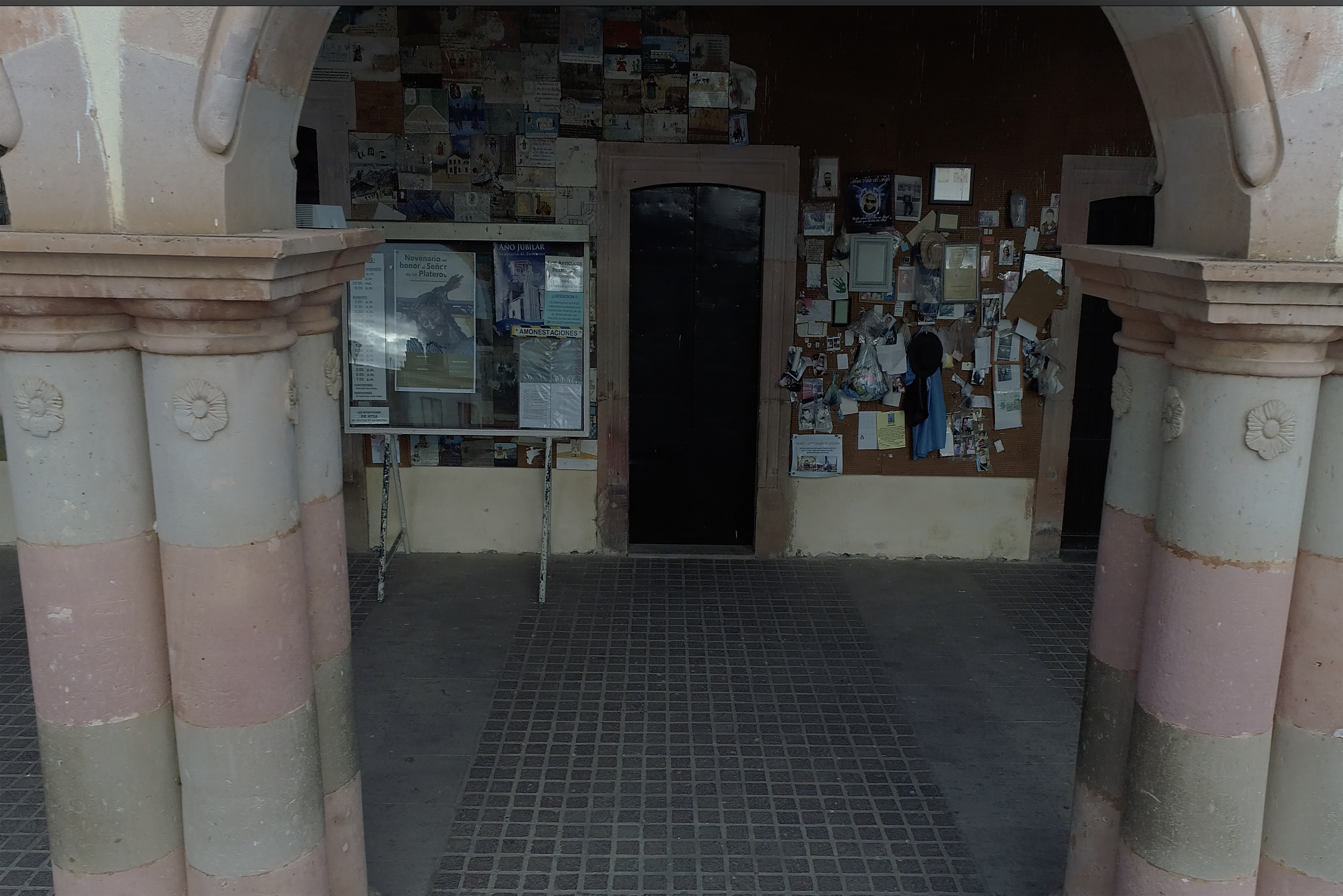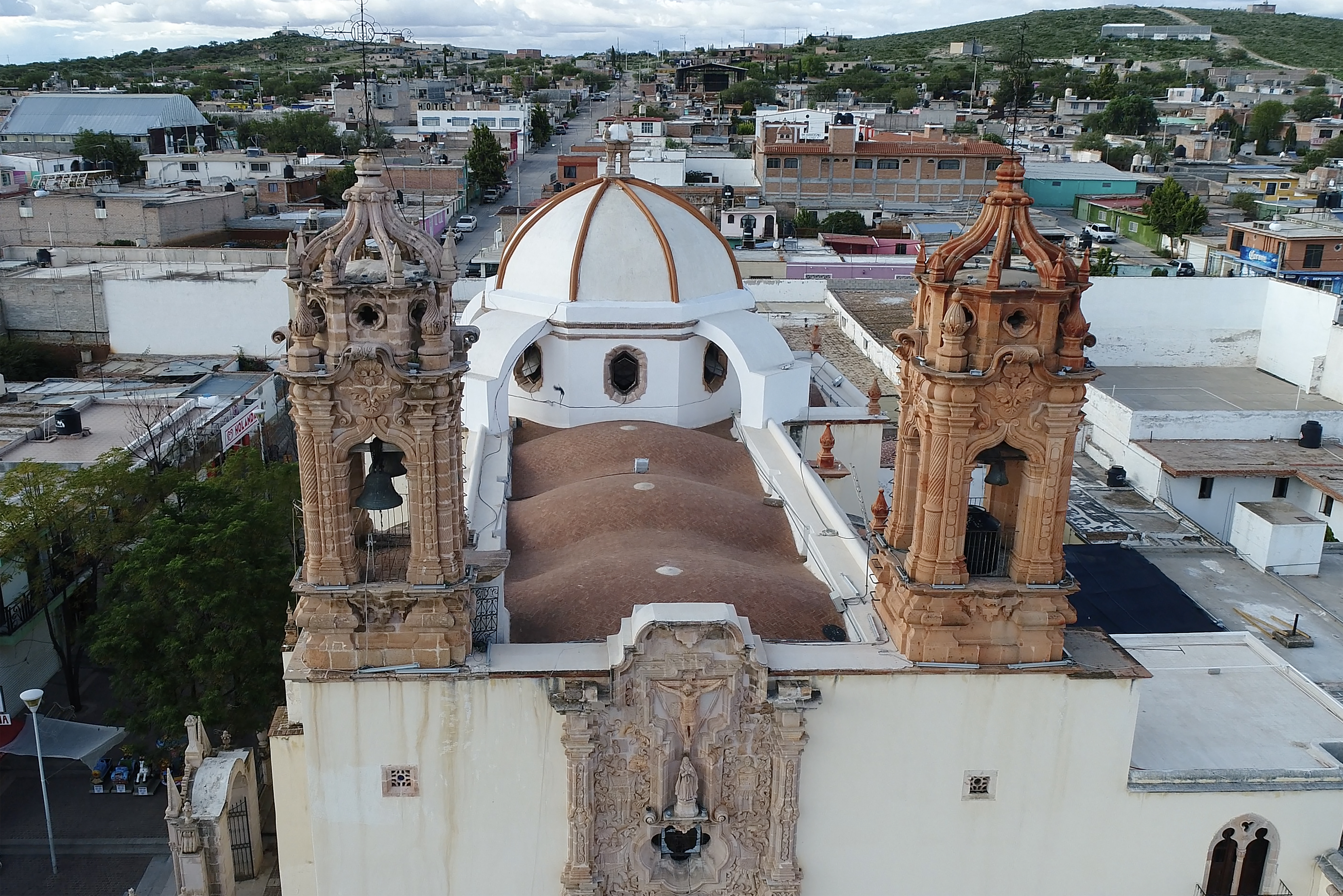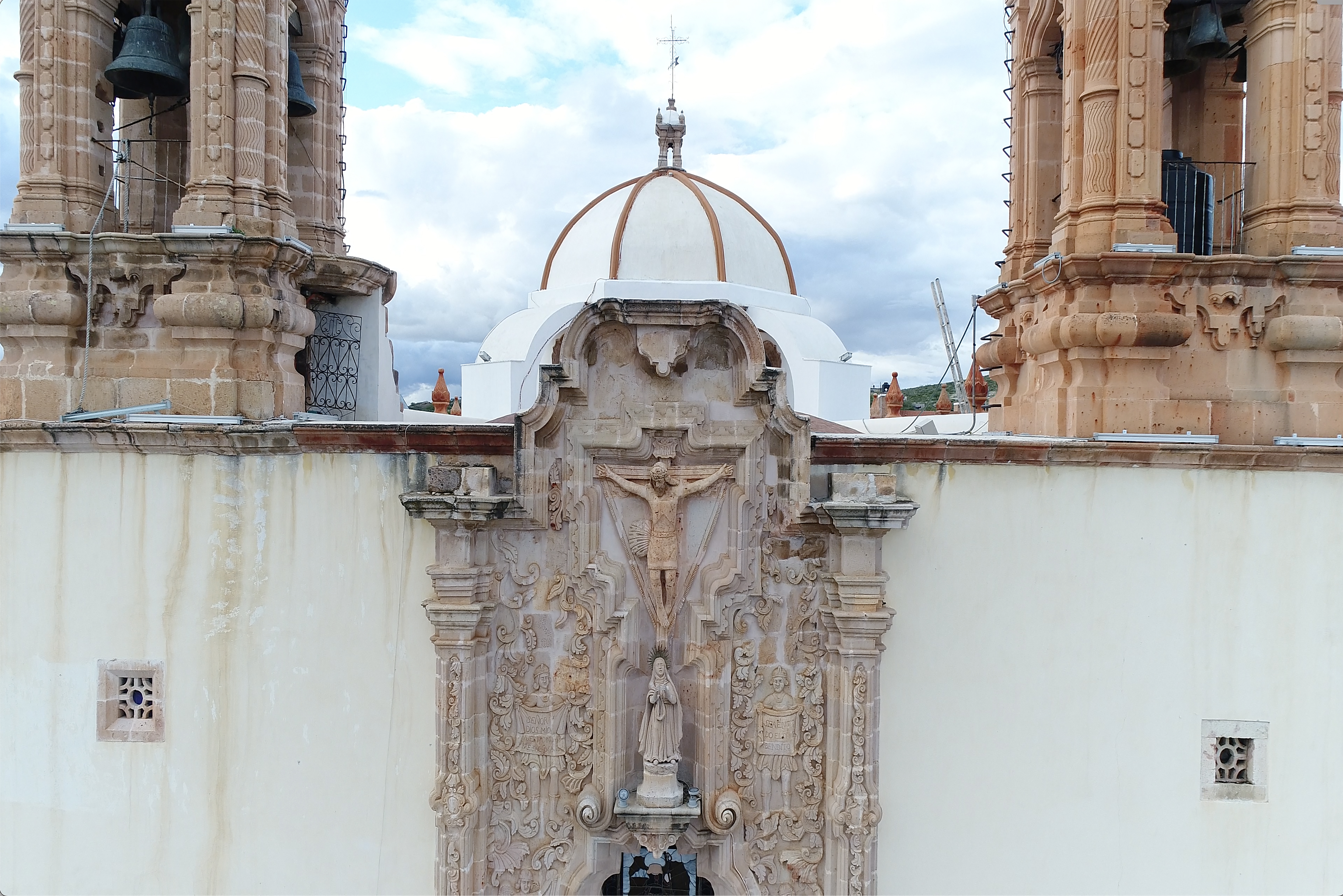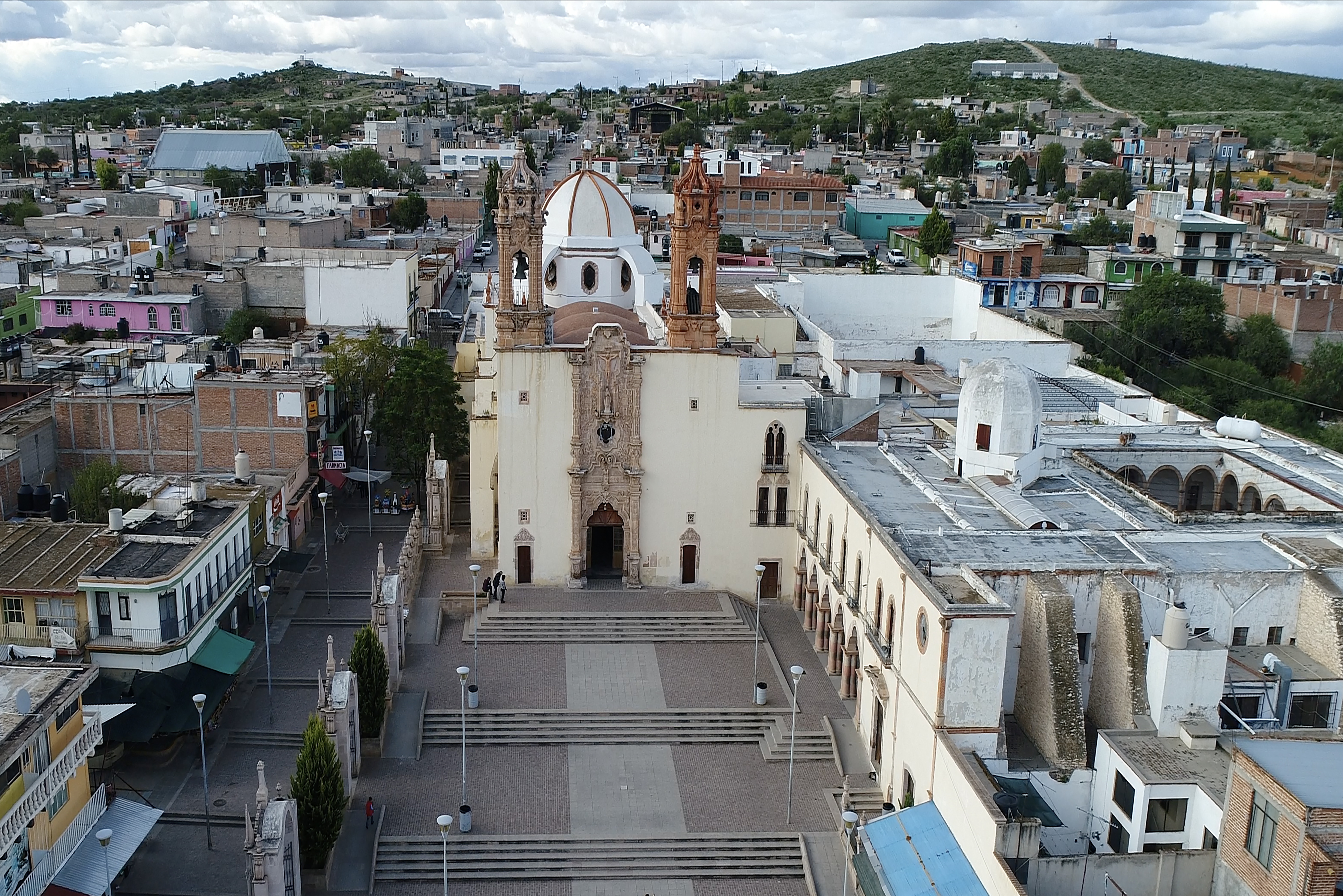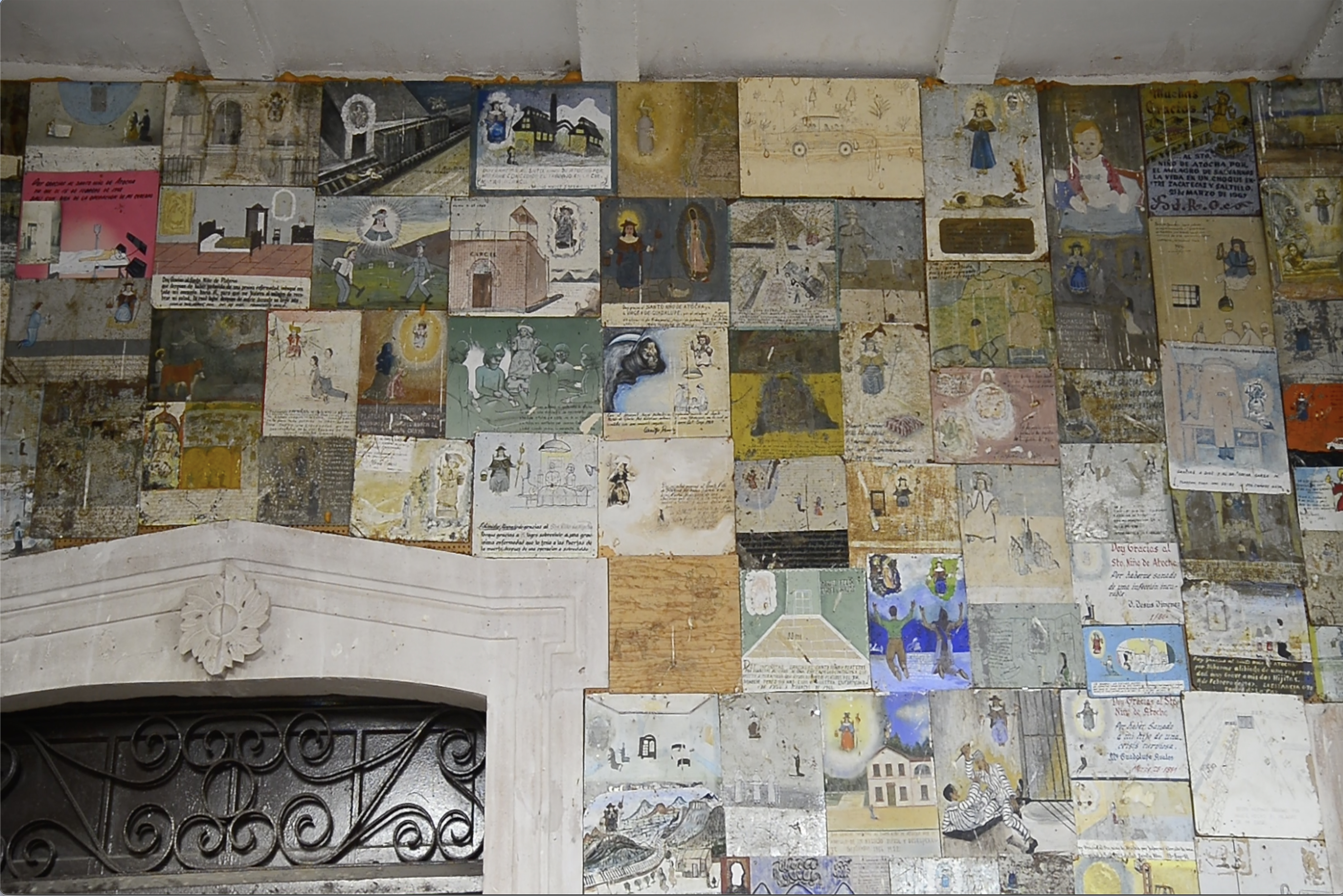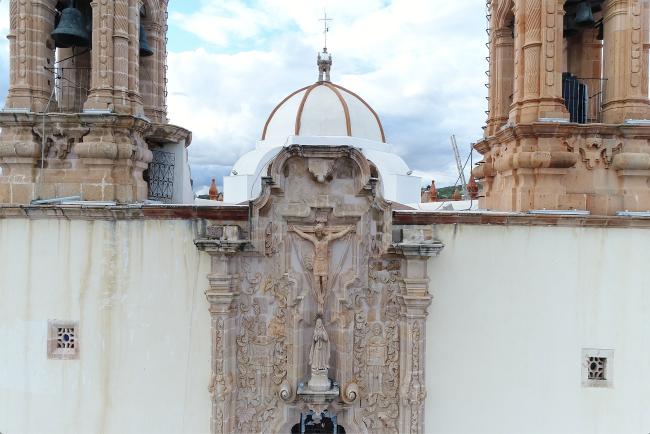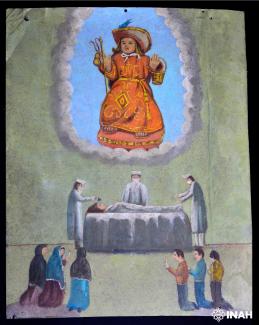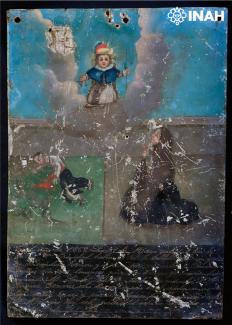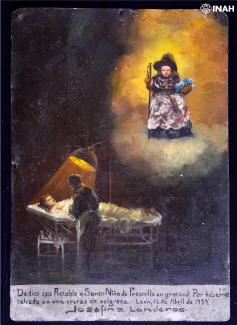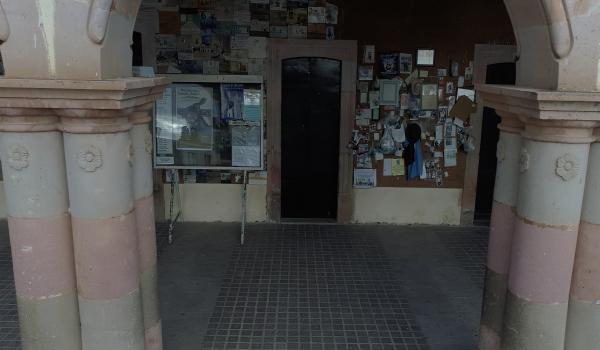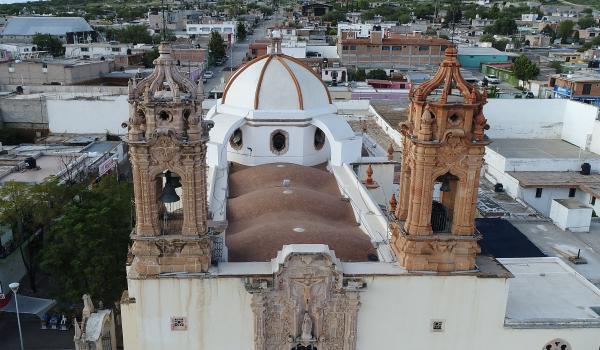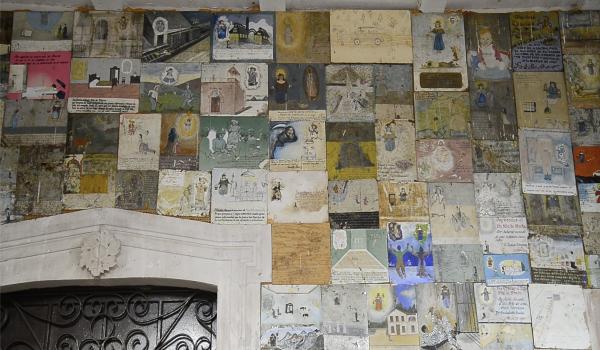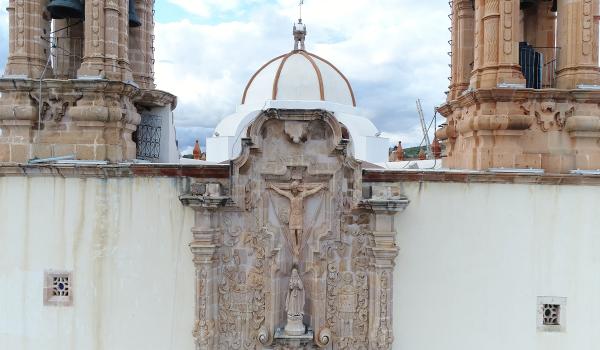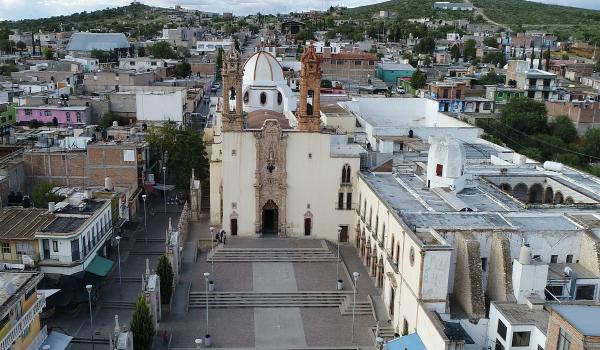Santuario de Plateros
Route element
Santuario de Plateros
The silver mines of San Demetrio were discovered in 1566, located 5 kilometers from the Real de Fresnillo. This discovery led to the surrounding area being populated with agricultural and livestock ranches, which later evolved into prosperous haciendas. By 1621, the site was officially named Real de San Demetrio de los Plateros.
Due to the growing devotion to the Cristo de los Plateros by the inhabitants of the area, the construction of a temple began in 1790. Years later, an image of Nuestra Señora de Atocha was placed in this temple, with its arrival in Plateros attributed to the Marquis of San Miguel de Aguayo, the owner of the mines.
According to popular tradition, at the beginning of the 19th century, the Virgin and Child had disappeared. In their place, another image was carved featuring a detachable figure of the Niño de Atocha with certain indigenous features. Devotion to this new image grew increasingly, attributed to the many miracles associated with it, turning Plateros into the most important pilgrimage center in the north.
The Sanctuary features a façade framed by pilasters on pedestals adorned with floral motifs. The entrance arch is semicircular and has two scrolls at its keystone, leading to a small angel. The façade is overlaid with a sundial in the shape of a dove with outstretched wings, symbolizing the Holy Spirit, which was placed in 1892. The second tier displays estípite pilasters and a central window that serves as a base for the niche where the Señor de los Plateros is located. Additionally, the temple has two single-story towers with abundant carvings on their corners. The interior is a single nave covered with a ribbed vault supported by fluted pilasters. The main altar is a delicate Neo-Gothic altar with filigree carvings, flanked by the Virgin of Atocha and Saint Demetrius. One of the side altars is dedicated to the Virgin of Guadalupe, and the temple walls display several 18th-century paintings.

